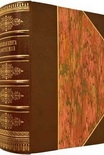Still Life, Melissa Milgrom [pdf e book reader .TXT] 📗

- Author: Melissa Milgrom
Book online «Still Life, Melissa Milgrom [pdf e book reader .TXT] 📗». Author Melissa Milgrom
Now Bruce wanted to dispel some misconceptions. He started with the popular notion that taxidermists derive pleasure from killing animals. The Schwendemans never kill animals for taxidermy, acquiring their specimens from natural death or roadkill—except for a Norway rat that Bruce's sister drowned for the AMNH's exhibition on epidemics. ("They didn't send us a decent specimen," he explained. "Central Park has the smelliest old rats.") Other fallacies are that taxidermists start the day off with a beer (David drinks only after five); that nothing repulses a taxidermist (Bruce faints at the sight of human blood, especially his own; he also thinks it's gross to preserve dogs and cats); and, most important, that taxidermists "stuff" animals.
Before taxidermists made careful studies of animal anatomy, they did stuff skins with sawdust and rags, making for lopsided and disfigured specimens. Even John James Audubon, who shot and preserved thousands of birds to use as models for his illustrations, failed to mimic life until he invented a way to wire wings in naturalistic poses. Today highly skilled taxidermists mount animals with unerring perfection using an astonishing range of prefabricated manikins and fake animal parts—rippled tongues, plastic claws, colorful glass eyes—that used to take pioneering taxidermists years of careful field observations to sculpt by hand (which is why the Schwendemans sarcastically call it "modelmaking"). However, much like store-bought Halloween costumes, store-bought anatomy means limited choices of species and poses. "You can't buy a manikin for a dwarf galago from a supply catalog!" Bruce says. The best taxidermists still insist on sculpting their own forms, trusting their own articulations even over those at museums, whose models vary from era to era.
Bruce practices what he calls "good taxidermy": respect for the laws of nature and conservation. For David, whose work had to meet the imposing standards of renowned mammalogists, herpetologists, and ornithologists, that's a given, and therefore he loves to provoke Bruce. Whenever Bruce says an animal was "liquidated," "collected," "culled," or "dispatched," David thunders, "Killed!" When Bruce says "sportsman," David groans "hunter." David also prefers "workshop" to "studio." "Oh, we could get fancy and call it a studio," he says, rolling his eyes.
David is extraordinarily unpretentious. People from the AMNH remember him as a humble, hardworking naturalist with an uncanny intuition for animal forms. For example, when Rose Wadsworth, the museum's former exhibition coordinator for living invertebrates, brought him a flying lizard from Asia that he had never seen, he positioned it with the sensitivity of a local who had grown up with it in his own backyard. Indeed, to understand David you have to understand his deep devotion to wildlife, especially birds.
David is a purist: a birder's birder. He loathes the term "bird watcher," for instance, because it implies lists and rarity. David would rather observe a common species a million times, just to see the sunlight hit its covet feathers as it banks into a salt marsh, than to glimpse an exotic species for a nanosecond and then race off to see the next one. For David, the walk counts more than the birds. In this, he's the definition of the old-school taxidermist—a field naturalist who believes the only way to replicate an animal faithfully is to study it in its native haunts.
The first day I met him, however, David wanted to talk about eating bald eagle. (Taxidermists love to joke about eating specimens, especially if a specimen is rare, endangered, or politically charged.) So what does it taste like? I asked.
"Like bald eagle!" he said with a chuckle.
Then he went over to the eagle carcass, glanced at it, and said, "Looks like ovaries. An adult female."
He sat back down and rocked in the afternoon heat. The rocker is the center of David's universe, the focus from which all the significant places in his life radiate, like the points on a compass: "up there" (the AMNH), "back there" (his house), "in here" (the workshop), and "the cabin" (the log house his parents built by hand and lived in until they died). Dressed in khaki from head to toe, worn leather work boots, and a leather belt with a brass buckle, he looked like a safari guide who got lost and ended up in New Jersey. He had folded paper for jotting field notes in his breast pocket and a small jackknife in his pants pocket, and he was smoking a pipe. He handed me a business card that said DAVID J. SCHWENDEMAN, CHIEF PREPARATORY TAXIDERMIST, AMNH, RETIRED.
"I was in my teens when I did my first mount. I mounted a starling," he said.
"Mine was a grackle," said Bruce. "Pup-Pup's was a pigeon. Mum-Mum's was a blue jay."
"My mother was really a skinner; she could skin anything," enthused David. He puffed on his pipe and continued. "She used to bake those pies. Is that what you'd call a blackbird pie?"
"Four-and-twenty blackbirds," said Bruce as he fastened antlers to a deer head manikin he was filing





Comments (0)